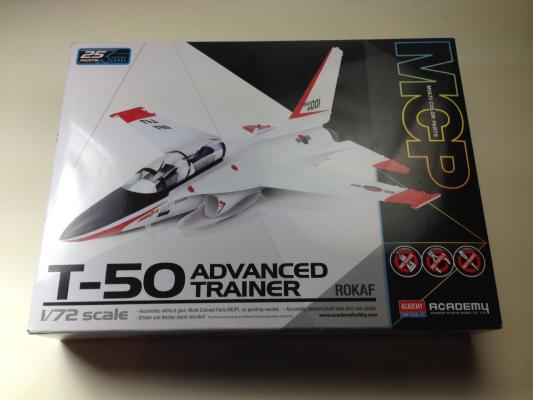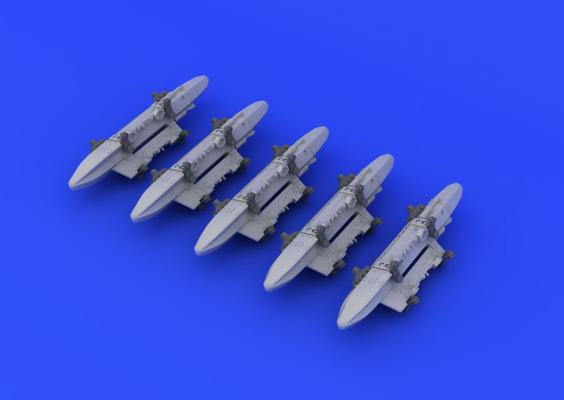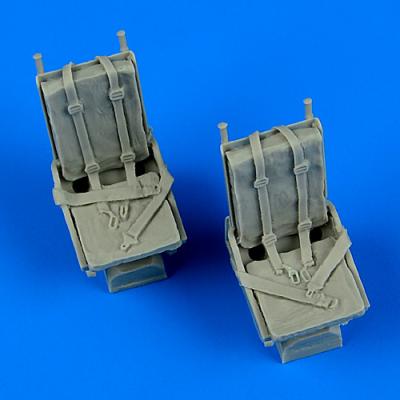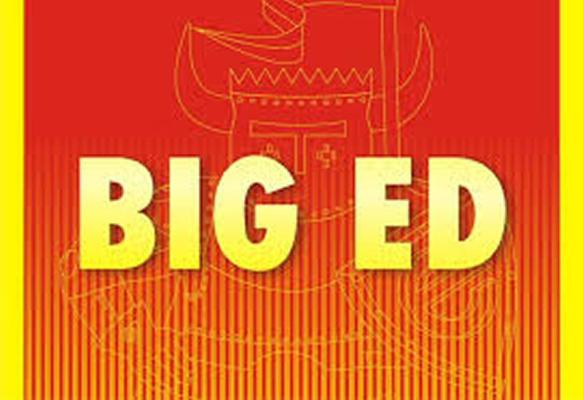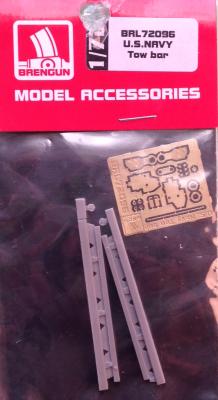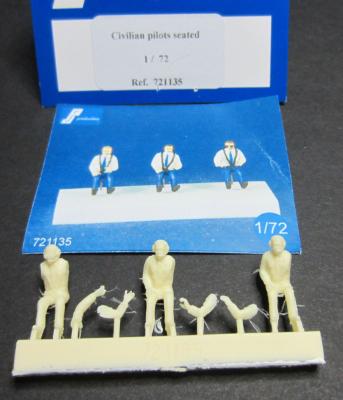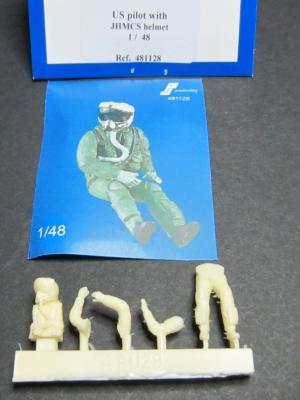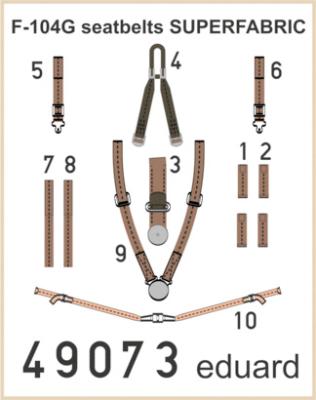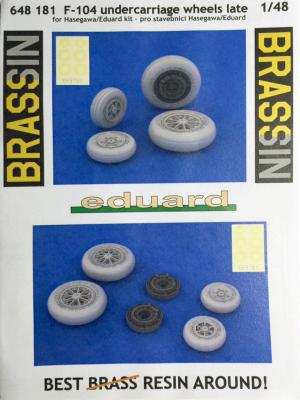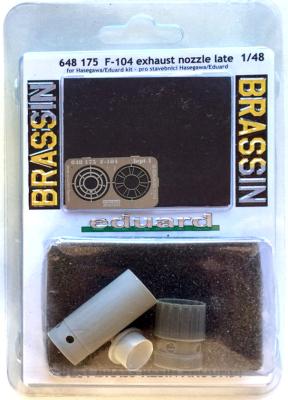The Korean Aerospace Industries (KAI) T-50 Golden Eagle Advanced Trainer is a new family of supersonic trainers and light attack aircraft developed by KAI and Lockheed Martin. It is the first supersonic aircraft developed by South Korea. The aircraft entered service with the Republic of Korea Air Force (ROKAF) in 2005 and has been ordered by several other nations such as Thailand, Indonesia and the Philippines.
The BRU-42 triple ejector rack (TER) is a weapon suspension unit that attaches to an aircraft's main pylons to allow the carrying of three weapons instead of one on a single pylon. They have been around for a while and can carry multiple types of weapons. Many models have simplified representations of the TER in their kits. Eduard’s set comes with parts to make five separate TERs each is comprised of 2 shackles for the attachment and six sway braces and one central body. The total set is 45 resin parts, color instructions and a full set of decals containing all the markings needed.
Accurate Miniatures had a great run producing kits that stand up even to this day. Academy has the molds currently and has reissued the kit regularly including the 1/48 B-25B which I was lucky enough to review. The kits has wonderful detail but could use some details here and there. To address one area, Quickboost has come out with an excellent set of pilots chairs with molded in seat belts. These are cast in the usual crisp, bubble free gray resin. One really, really nice thing is that both seats are the same EXCEPT the seat belts are different which is a wonderful little detail.
This set provides belts for the F-104G using the Mk. GQ7A ejection seat. The F-104 also used a C2 ejection seat and one is provided in the Hasegawa kit I used (stock #PT 20) but the seats are very different designs and this set won’t work on the C2 seat. In general, the export versions of the F-104 used the Mk. GQ7A seat.
I would consider this a “must have” since the base kit doesn’t provide any kind of harness for the GQ7A seat. Eduard makes two harness sets for this kit, the FABRIC set reviewed here and SUPERFABRIC (Eduard #49 073) set that I’ll share with you in separate review. The FABRIC set is a little more difficult because you have small PE buckles and restrainers to thread the tiny belts through. This was my first exposure to this type of belts from Eduard. The details are very refined and the PE parts add a nice dimension of depth to the finished assembly.
Recently Brengun has released a series of interesting accessories in 1/72 scale, most aimed at those looking to add a little something different and to spruce up the display of our recent builds.
This set fits squarely in that category and provides a tow bar currently used by the US Navy on its carriers and other aviation ships. The tow bar is used to move or re-spot an aircraft or helicopter when its engines are not running. The tow bar is attached to the nose gear of the aircraft of the tail wheel of a helicopter and then hitched to a flight deck tractor so that the aircraft/helo can be moved around.
Typically aftermarket figures, especially pilots tend to be for military aircraft. PJ Production has provided an option for those who wish to add a pilot to civilian type aircraft.
The product contains three figures of two different styles. All three are wearing headsets and dressed in dress clothes including a tie. One of the three is wearing sun glasses as well as two arm options. The other two do not have sun glasses and the left arm is attached with hand on the left leg. All three do not offer head options and are cast on the body. A very slight flash is on the figures which is simply brushed away and detail is nice and crisp.
Test fit is in the 1/72 Roden C-123 provider. Figure parts will need to be adjusted slightly too clear parts such is control column.
A big thanks to PJ Productions for providing these fine figures and to the IPMS USA for the chance to review them.
Many of the US fighter pilot figures are depicting older style safety equipment like helmets and oxygen masks. PJ production released a nice version of current military “fast jet” pilot with a Joint Helmet Mounted Cueing System (JHMCS) and Gentex MBU-20 oxygen mask.
The product contains a single pilot figure and is marketed to work with F-16 or F-18 aircraft but after test fitting, it can be used in the F-15 as well. As with most figures, there may be places that need to be altered. When test fitting, the legs would need to be separated slightly to fit around center instrument panel and knees bent to rest on the rudder pedals. Some seats may also require the torso to be adjusted to fit the seat but nothing to great, just small adjustments. With all the variations of kits out there, nothing is simply drop in fit.
This set provides belts for the F-104G using the Mk. GQ7A ejection seat.
The F-104 also used a C2 ejection seat, and one is provided in the Hasegawa kit I used (stock #PT 20), but the seats are very different designs, and this set won’t work on the C2 seat. In general, the export versions of the F-104 used the Mk. GQ7A seat. I would consider this a “must have” since the base kit doesn’t provide any kind of harness for the GQ7A seat.
This set is part of the Brassin line and provides an upgrade for the wheels on the Hasegawa/Eduard F-104G kits.
This set is part of the Brassin line and provides an impressive upgrade for the exhaust can, burner ring and nozzle of the J79-GE-19 powered F-104G.
The set is intended for the Hasegawa/Eduard kit. I used it on the Hasegawa F-104 Starfighter “Nato Fighter” stock # PT20 boxing. This set replaces parts U6, R26, R27 and L8 in the original kit. Photo etch parts are included to represent the burner ring(s). The exhaust tube is a seamless part which has very well done interior detail. In fact, every part in this set is a refined replacement of the plastic parts in the base kit. The exhaust nozzle is much thinner and has more surface detail than the kit part.

